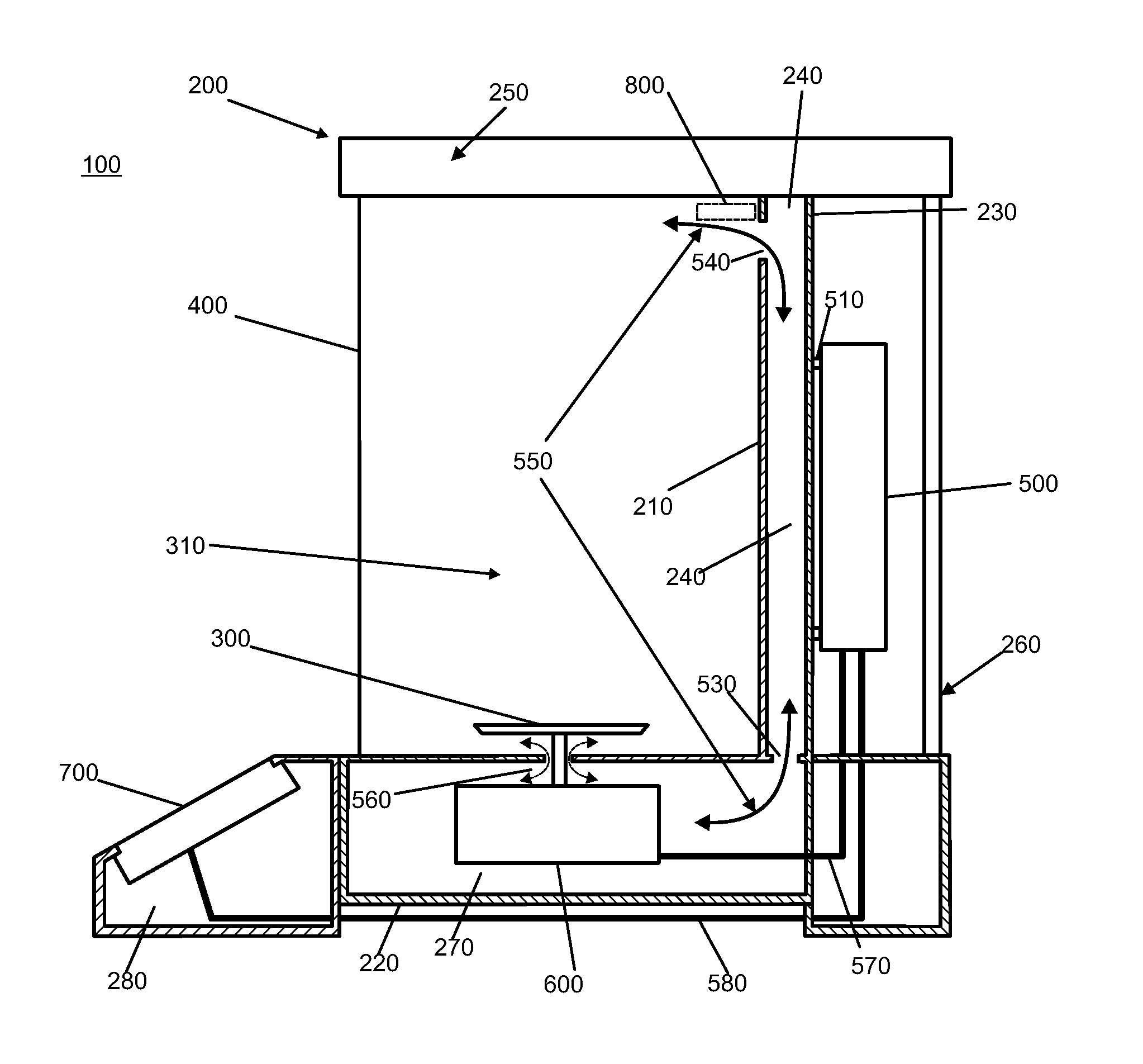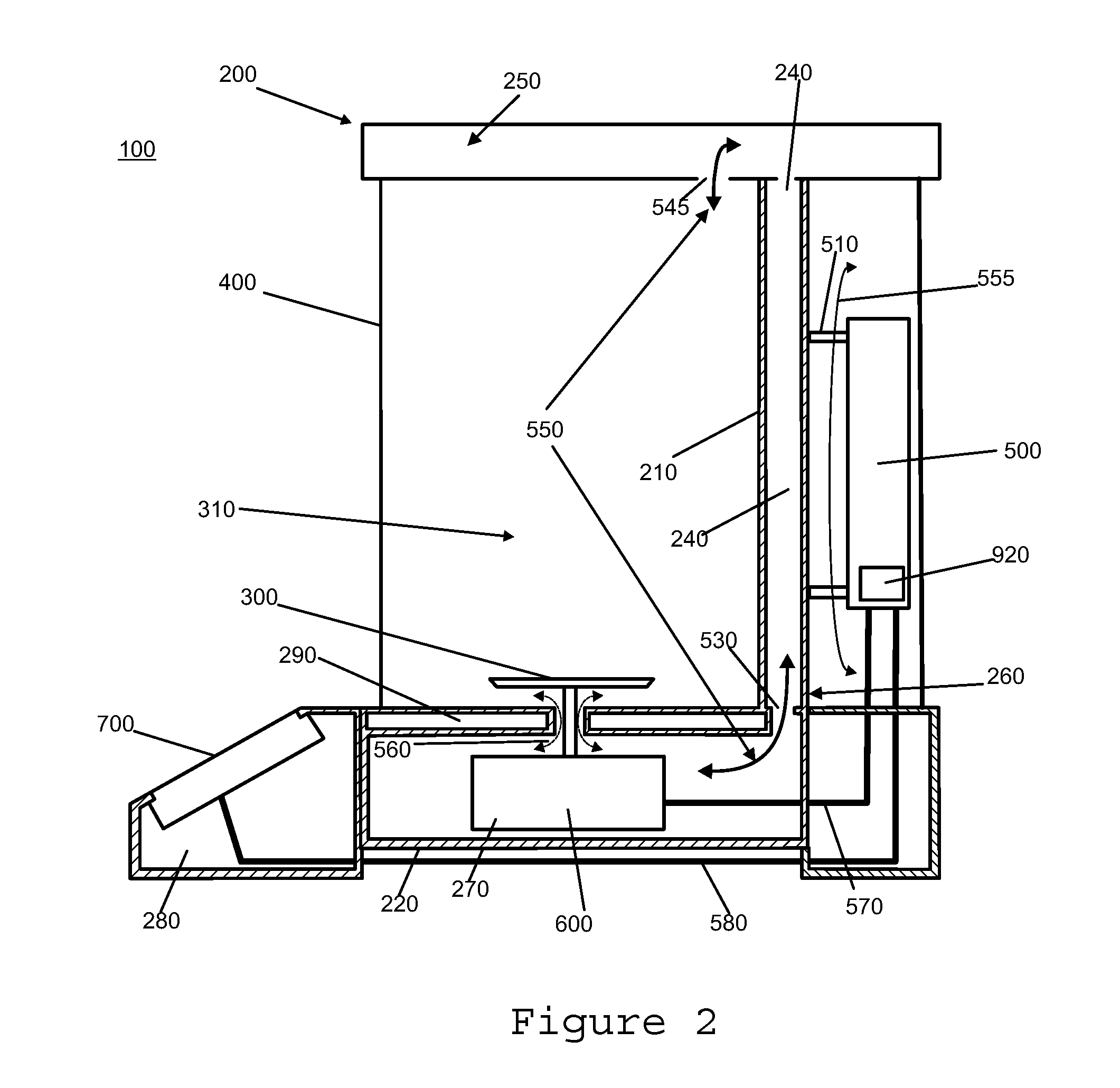Balance with stable air stratification in the weighing compartment
a technology of air stratification and balance, which is applied in the direction of weighing apparatus details, instruments, measurement devices, etc., can solve the problems of inaccuracy of weighing, heat dissipation of balance electronics, and the need for separate housings, etc., to achieve convenient plugging and unplugging
- Summary
- Abstract
- Description
- Claims
- Application Information
AI Technical Summary
Benefits of technology
Problems solved by technology
Method used
Image
Examples
Embodiment Construction
[0031]FIG. 1 shows a first embodiment of the balance 100 according to the invention with a balance housing 200, a balance pan 300, a weighing compartment 310 surrounding the balance pan 300, a draft shield 400 enclosing the weighing compartment 310, a weighing cell 600 arranged below the balance pan 300, and a weighing cell compartment 270 enclosing the weighing cell 600.
[0032]The balance housing 200 has a lower housing part 220 which is arranged below the weighing compartment 310, an upper housing part 250 which is arranged above the weighing compartment 310, and a lateral housing part 260 which is arranged on a side of the weighing compartment 310. The weighing cell compartment 270 is part of the lower housing part 270.
[0033]The balance 100 has an indicating and operating unit 700 which serves for the control of the balance 100 by an operator and for the display of the measurement results. The indicating and operating unit 700 can be arranged at or in the lower housing part 220. I...
PUM
 Login to View More
Login to View More Abstract
Description
Claims
Application Information
 Login to View More
Login to View More - R&D
- Intellectual Property
- Life Sciences
- Materials
- Tech Scout
- Unparalleled Data Quality
- Higher Quality Content
- 60% Fewer Hallucinations
Browse by: Latest US Patents, China's latest patents, Technical Efficacy Thesaurus, Application Domain, Technology Topic, Popular Technical Reports.
© 2025 PatSnap. All rights reserved.Legal|Privacy policy|Modern Slavery Act Transparency Statement|Sitemap|About US| Contact US: help@patsnap.com



